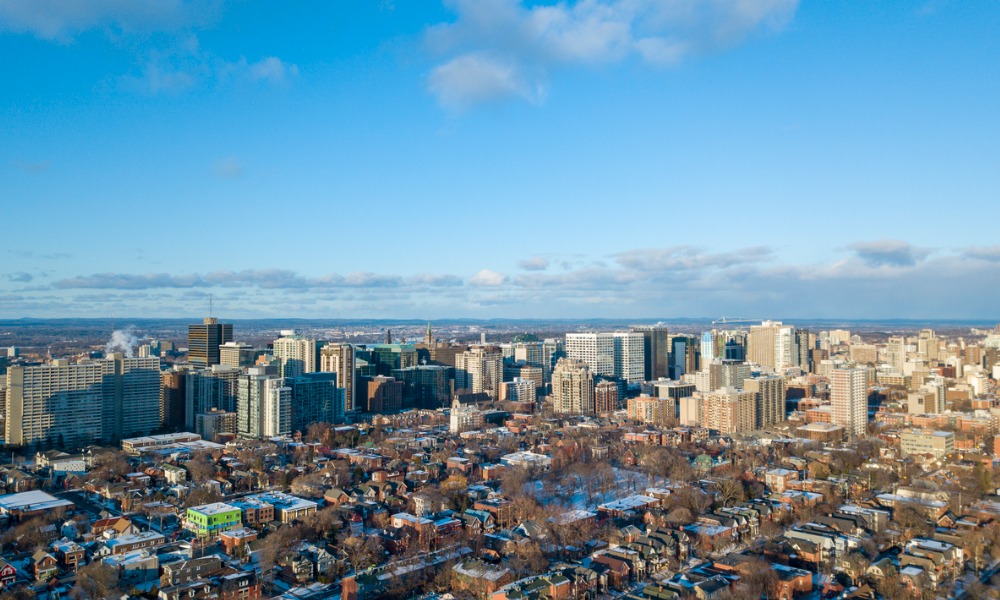OREB reports strong sales – but other factors are clouding the outlook

Ottawa’s housing market remains stable this fall, with rising sales and steady prices, according to the Ottawa Real Estate Board (OREB). However, concerns over housing supply and slow construction persist.
OREB said that 1,047 homes were sold through the MLS System in September, up 11.4% from the same month in 2023.
While the year-over-year jump in home sales is encouraging, sales were still 17.4% below the five-year average and 15.4% below the 10-year average for September. For the year so far, 10,485 homes have been sold, a 6.4% rise over the same period in 2023.
“As we navigate a shifting housing market, Ottawa’s fall outlook is healthy,” said OREB president Curtis Fillier. “Activity is robust with an uptick in sales and prices remaining steady. Meanwhile, both buyers and sellers are rethinking their purchasing power amidst news about additional interest rate cuts on the horizon, longer amortizations, and increased price caps for insured mortgages.”
Missing middle
While recent policy changes could potentially stimulate demand, Fillier pointed out that Ottawa’s core issue remains a lack of housing supply.
“But Ottawa’s market does not typically have demand problems — we have chronic supply issues,” he said in a statement. “We’re not building enough homes in the city, and we’re not building enough of the right homes to address the ‘missing middle.’”
The “missing middle” refers to housing types like townhomes and mid-rise apartments, which are often overlooked in favour of high-end single-family homes or high-rise condos.
A report from Canada Mortgage and Housing Corporation (CMHC) highlighted the severity of the issue, noting that Ottawa’s construction rates, when adjusted for population, are at their lowest level in nearly a decade. Additionally, a City of Ottawa progress report found that the city had only reached 22% of its 2024 housing target by the end of August.
More home, but still short
New residential listings in September 2024 were up 3.9% compared to the same period in 2023, with 2,343 new homes hitting the market. This figure is 4.7% higher than the five-year average and 11.6% above the 10-year average for September.
Active residential listings also rose by 16.9% year-over-year, with 3,529 homes on the market at the end of September. Despite this increase, inventory levels are still constrained.
The months of inventory, which indicates how long it would take to sell the current inventory at the current sales pace, was 3.4 months, up slightly from 3.2 months in September 2023.
Stable home prices
Despite the supply shortage, home prices in Ottawa have remained relatively steady. The MLS Home Price Index (HPI) shows that the composite benchmark price for a home in September 2024 was $642,800, a modest 0.2% increase from the previous year.
Single-family homes saw a slight increase, with the benchmark price rising 0.5% year-over-year to $729,000. However, other housing types did not fare as well: townhouses/row units saw a 1.7% decrease, bringing the benchmark price to $500,000, while apartment prices dropped 1.3% to $414,200.
Read next: How Canada can solve "mismatch in housing supply and demand"
The average price of homes sold in September 2024 was $685,551, up 1.4% from the same month in 2023. Year to date, the average price across all homes was $679,082, a 0.9% rise from the previous year.
OREB said that while average prices are helpful for identifying trends, they don’t necessarily reflect the value changes of individual properties, as prices vary widely between neighbourhoods.
Make sure to get all the latest news to your inbox on Canada’s mortgage and housing markets by signing up for our free daily newsletter here.



